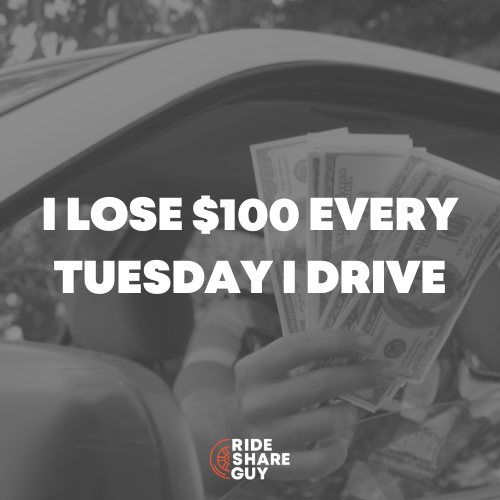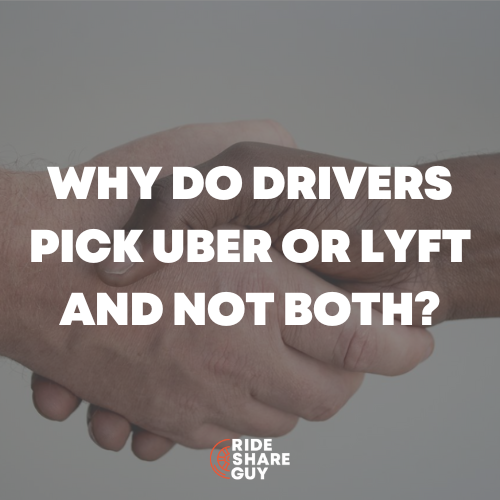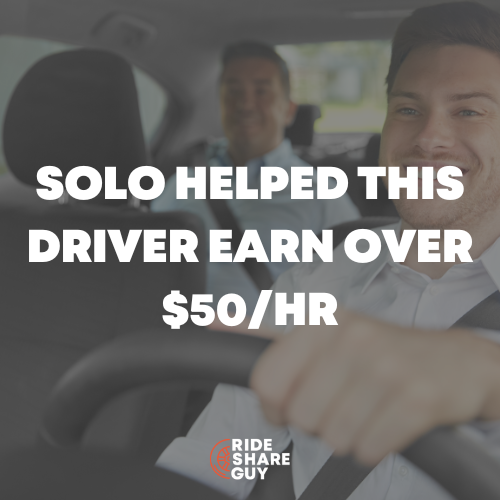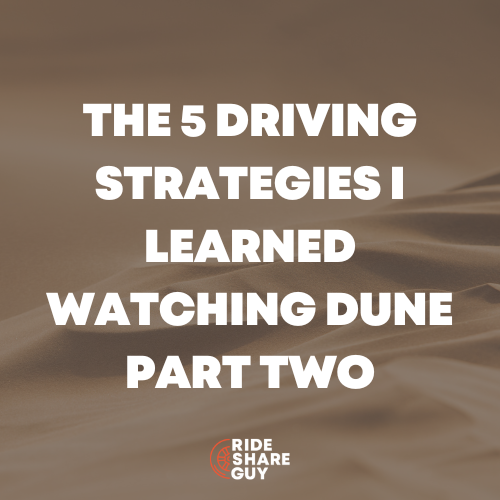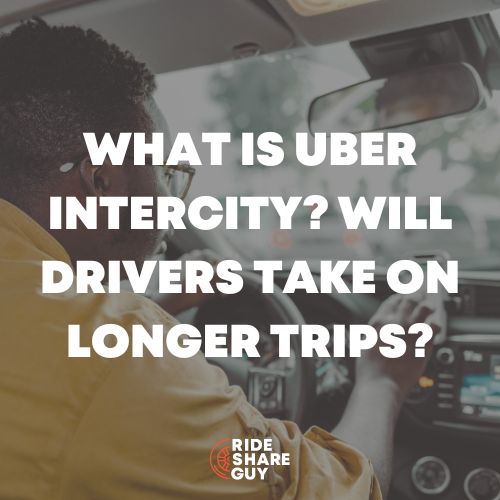How hard could driving in a new city be if you’re a veteran rideshare driver? Senior RSG contributor Will Preston asked that question, and learned the hard way, when he drove for a weekend in Los Angeles.
This site has more than one article that talks about how driving rideshare is so much more than just turning on the app and going where it tells you to go. I’ve always known that, but it wasn’t until a few weekends ago that this fact was driven home. I live in San Diego but recently I found myself in the suburbs of Los Angeles on a Friday evening and decided to give it a whirl. I’ve got several thousand Uber and Lyft rides under my belt – and even a few dozen Bounce rides – so I know what I’m doing. Turn on the app and just go where it tells me to go; how hard can it be?
It turns out, it’s pretty hard. I underestimated the degree to which my familiarity with San Diego’s layout affected my ability to be an effective rideshare driver. I only drove for a few hours, but it didn’t take long for me to realize I just needed to set a destination filter for San Diego and head home.
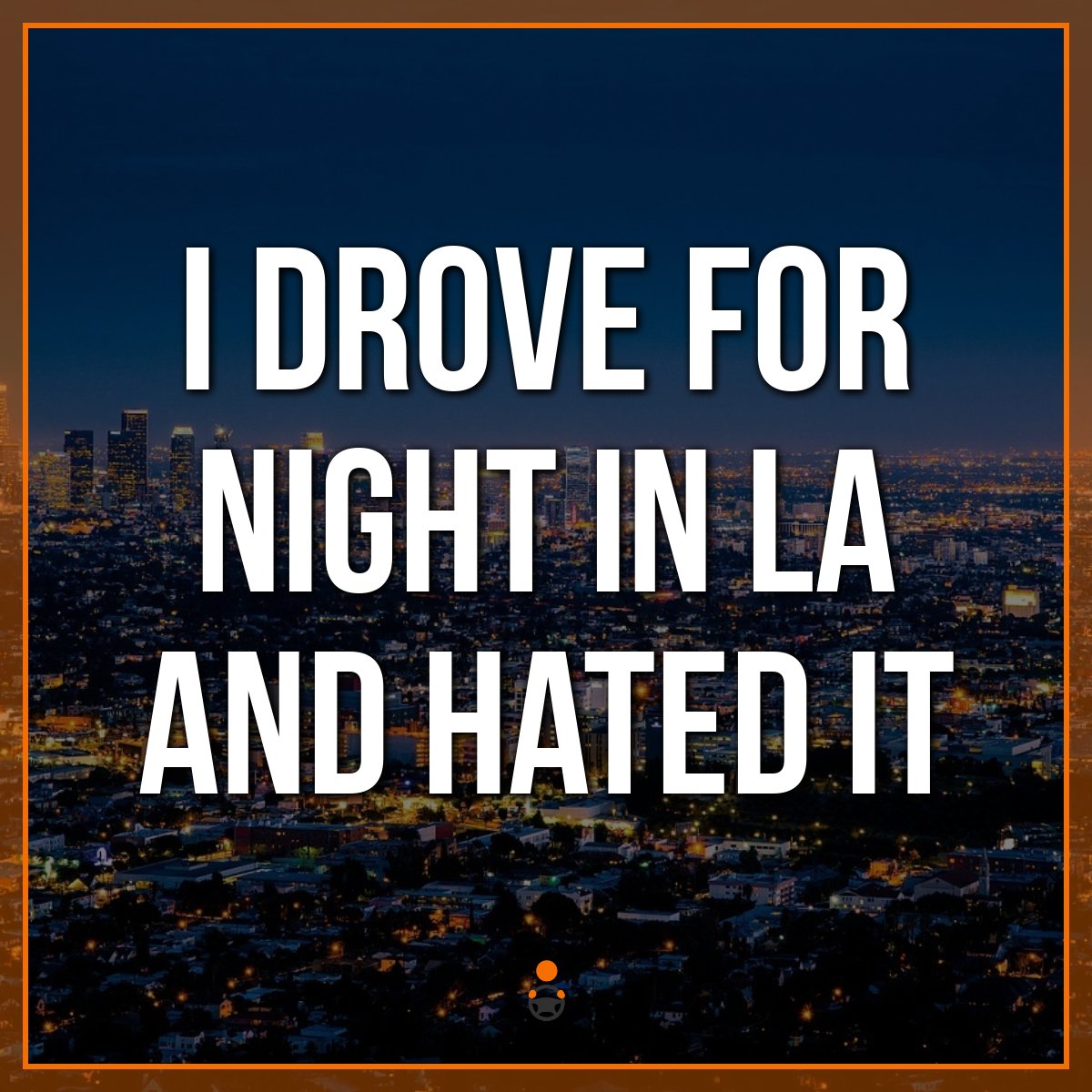
Driving in Los Angeles (LA): Rush Hour Horror Show
I’ve driven in rush hour many times. In fact, every weekend I drive starts out with a few hours of driving in San Diego rush hour traffic. This is nothing compared to Los Angeles rush hour traffic. The number of times I sat at a light watching it turn green without going anywhere was way more than I was used to.
A light at the corner near the University of Southern California (USC) comes to mind. I thought I would never get through that light. I can see why Uber has experimented with increasing the per minute rates in cities like Los Angeles, because you spent so much of your time literally just sitting there and doing nothing. I found the overall process incredibly frustrating.
How Different Can Cities Really Be? I Naively Asked
It’s two Southern California counties, right? How different could they be? They are actually very different. While we both suffer from suburban sprawl, Los Angeles suburbs are much more dense than San Diego suburbs. They have much more parking on the street and very little parking in the driveway.
Couple that with tiny two lane roads, and you have a very different driving experience, especially while waiting for a passenger. You are often blocking traffic, which is already bad enough. Unless you are able to adopt a “I really don’t care if everyone honks at me” attitude, your stress level is likely to be much higher than it is where I live.
This brings me to one of my favorite subjects: UberPOOL and Lyft Line. Frequent readers of this site will know that I am the only person Harry has ever met that actually likes UberPOOL – or at least I don’t hate it. I’ve written articles about this before, and I remember comments from those articles about how I simply don’t understand what it’s like to drive POOL and a much more urban environment.
Now I understand those comments. It’s one thing to be pulled over out of the way waiting for a passenger. It’s a whole other thing to be doing the same thing while blocking traffic. Suffice it to say I have a little more sympathy for my POOL-hating readers.
Local Knowledge Goes a Long Way
There are little things you know, being familiar with your city, about common pickup areas that are incredibly helpful at being efficient while rideshare driving. Just doing what the GPS tells you to do can often get you into trouble. For example, the GPS told me to turn left on the little piece of 32nd St. to the west of Hoover Street.
What any local would know is that if you do that, you are turning directly into the entrance of an underground parking garage. I was able to make an illegal U-turn once I realized my mistake, but my point is that sometimes the GPS tells you to do really dumb things. If I had ever been to that target before, I would know that turn is something I can’t do.
But once I picked up the two USC students from that target is when I made my worst mistake. Instead of making a slightly tough turn and going down 32nd St. I went with the flow of traffic and went south on Hoover. I made the trip three times longer from a distance perspective and probably 10 times longer from a time perspective. There was no traffic on 32nd St. and I could have gone straight there in one minute. A local would not have made that mistake.
I Didn’t Know Common Pickup Spots
I know where to pick up people at the Mission Valley Mall in San Diego. I know where the difficult pickup spot is, and the easy pickup spot for the location formerly known as Sports Arena. I know the quick way to get in and out of the Del Mar Fairgrounds. (My secret, by the way, is to not get off at Villa de la Valle. Get off at Loomis Santa Fe Dr. and go south on Stevens Avenue.)
But there were multiple times when I was picking up somebody in a dense area and had difficulty finding them. They would ask me what major landmark I was near, or what street corner I was at. I knew neither of those things, because I just followed my GPS to where I was going and didn’t necessarily pay attention to the names of every street along the way.
I certainly knew no names of any landmarks. Am I near the USC Student Union Hall? I had absolutely no idea. I had to cancel more than one ride because I simply couldn’t connect with my passenger. That was incredibly frustrating.
Knowledge of Common Intersections, Routes, and Turns
I don’t have to look at the GPS to get from the San Diego airport area to my favorite spot to wait in Little Italy. I know that when going from the airport or Little Italy area and going to Northeast San Diego, you’re going to find yourself going south on five and then north on 163. All these things are all really helpful to know when navigating San Diego.
I didn’t know any of those things in the area of Los Angeles I found myself in. I thought I knew Los Angeles; I was wrong. I knew West Los Angeles. I know how to get from El Segundo to Manhattan Beach and Hermosa Beach. I know Marina del Rey, Venice, Santa Monica, and Hollywood. I never saw any of those places that evening. I was stuck circling USC, somewhere I had never been.
Yes, you can follow the GPS, and if you pay attention you will turn at the correct intersection. But get distracted for just a second and you’ll find yourself getting on an on-ramp to 101 instead of 110. These are two very different freeways going to very different directions.
Locals are having a laugh at my expense while reading this. I did indeed get onto 101 when I was supposed to get onto 110. Knowing the common highways, major intersections and thoroughfares is really important. Driving without that knowledge is possible, but it is much more difficult and much more stress inducing. New rideshare drivers simply don’t take this into account.
There was one time when I thought I knew better than the GPS, and boy was I wrong. The GPS told me to turn multiple times to go around the block to reach this passenger. I knew the passenger was just around the corner so I went against the GPS’s directions and headed straight for the passenger. That’s when I found out that the passenger was on a one-way street going the wrong way and, thanks to my fancy driving, I was now several minutes from the passenger. I ended up having to cancel. So embarrassing.
Not Knowing Where to Go
In addition to knowing where to go, there’s also knowing where not to go. I’m talking about more than neighborhoods with higher crime rates. I’m talking about knowing that USC gives all students free rides all night long. When passengers aren’t paying anything, they’ll take a ride that no normal person would take. Let’s go back to the passengers I picked up earlier (the USC students).
These passengers were going .3 miles on a bright sunny day with maybe 2 pounds of grocery bags with them. They spent more time waiting for me to get to them than they would’ve spent walking that distance. It was broad daylight and there was no safety issue I’m aware of, although I could be wrong about that too given my lack of local knowledge.
But my point is still the same: I spent an hour and 1/2 making three dollars. If I were a local driver, I would avoid USC at all costs when it’s free ride time. It’s a bit like how I avoid the Gaslamp district in San Diego. I will do a drop off there, but then I will get out of there as quickly as possible, and will only take a pickup that is on my way.
Take the Time to Get to Know Your City
Basically, the best way to get to know your city is to just start driving. Realize that your first month or so will be very different from the following months. You’re not going to know any of that local information unless you’re a true local who has lived in your city for a long time and done a lot of driving. Just make sure you pay very close attention to the GPS, and make note of places where you find yourself turning a lot. It won’t be the last time you see them.
One thing you might do is pick the top 10 tourist destinations in your town, or entertainment destinations if you’re not a tourist town, and make sure you understand the layout and streets around those destinations. See if you can spot a pattern of where rideshare drivers tend to drop off and pick up. Do that before you start driving.
Take a Deep Breath
If you are learning to be a rideshare driver in a city similar to Los Angeles, then just realize it’s going to be very stressful in the beginning. Take a lot of deep breaths and take a lot of breaks when you’re first learning how to do this.
It’s going to be stressful – more stressful than you think it is. I really do remember thinking “how hard can this be?” Driving in Los Angeles reminded me that it can actually be quite hard.
Readers, what are your tips for drivers driving in a new city?
-Will @ RSG
